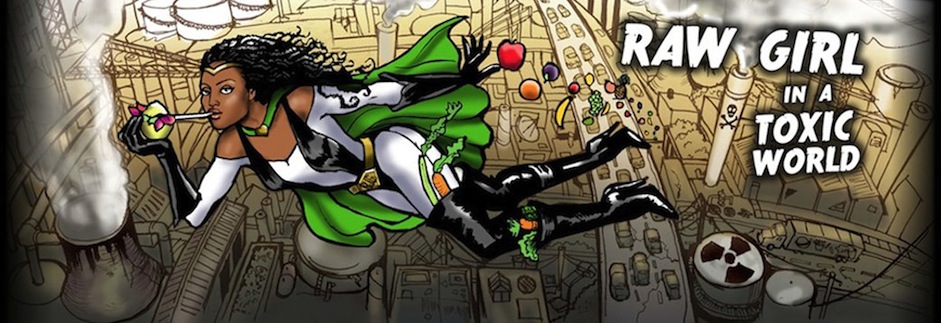 Today’s exercise in “what the heck? Why not?” was to identify a food that I perceive to be a “good” food and look for primary literature that contradicts my view of that food. Why would I do this? I find it so interested how much health information is out there and depending on what a company or organization stands to gain, you may hear biased evidence about particular kinds of food. Obviously this happens the most in the meat, dairy, and processed food industry; since vegetables have NEVER been proven to cause cancer, hypertension, or osteoporosis. But anywhoo, the gist is, it is healthy to reconsider your viewpoint from time to time and in the healthy living world, it doesn’t happen enough, with various sides clinging to their opinion like it’s the religious truth.
Today’s exercise in “what the heck? Why not?” was to identify a food that I perceive to be a “good” food and look for primary literature that contradicts my view of that food. Why would I do this? I find it so interested how much health information is out there and depending on what a company or organization stands to gain, you may hear biased evidence about particular kinds of food. Obviously this happens the most in the meat, dairy, and processed food industry; since vegetables have NEVER been proven to cause cancer, hypertension, or osteoporosis. But anywhoo, the gist is, it is healthy to reconsider your viewpoint from time to time and in the healthy living world, it doesn’t happen enough, with various sides clinging to their opinion like it’s the religious truth.
I chose to focus on Nori, a type of seaweed I love to consume especially in dried unsalted form, and consider healthy because of its nutrient content. My personal bias with this food is that I began to consume it, along with other seaweeds when changing my diet to transform my acne problem skin. Seaweeds played a major part in my healing so I have firsthand positive experience with it. Nori is fat-free and provides the body with Vitamin A,C, folate, iron, calcium, magnesium, potassium, and protein. Although it is highly debated, studies also support that dried Nori is the most excellent source of B12 for vegetarians, and contains less dietary iodine than other seaweeds, (Watanabe et al, 1999).
It was actually difficult to find to many studies or journals that asserted Nori is a “bad” food, but what I did find are studies that confirm the heavy metal contamination of commercially available seaweed (Nori being the most popular). “On April 13, 2021 Enviroreporter.com tested Nori seaweed from Japan bought from a Los Angeles store….the [seaweed] was 94.7% above normal. These tests were performed with an Inspector Alert nuclear radiation monitor, the same detector used in over 1,500 tests for Fukushima radiation beginning four days after the March 11, 2011 triple meltdowns at the destroyed Fukushima Daiichi six-reactor complex in Japan.” Another study found levels of total and inorganic arsenic in seaweed. “Using 31 samples (all purchased as a dried product) covering five varieties of seaweed were collected from various retail outlets across London and the internet. Arsenic was detected in all samples with total arsenic at concentrations ranging from 18 to 124 mg/kg. Inorganic arsenic, which can cause liver cancer, was only found in the nine samples of hijiki seaweed that were analysed, at concentrations in the range 67–96 mg/kg. Other types of seaweed were all found to contain less than 0.3 mg/kg inorganic arsenic, which was the limit of detection for the method used,” (Rose, M. et al, 2007). In this study, Nori was not found inherently toxic, but low levels of arsenic were present.
After conducting this research, my views on this food have not changed. I do believe it is a healthy food. However, obtaining this information has caused me to be concerned and more intent on gathering information about where the Nori I consume is harvested and whether or not it has been tested, especially for radiation. Considering another contradictory opinion wasn’t bad at all, worst case I would have had to give up my delicious Nori rolls, and best case scenario, I learned something new to share with you. –Xo Raw Girl
References:
Netten, C. (2000). Elemental and radioactive analysis of commercially available seaweed.The Science of the Total Environment, 169-175.
Watanabe, F., Takenaka, S., Katsura, H., S. A. M. Zakir Hussain Masumder, Abe, K., Tamura, Y., & Nakano, Y. (1999). Dried Green and Purple Lavers (Nori) Contain Substantial Amounts of Biologically Active Vitamin B12 but Less of Dietary Iodine Relative to Other Edible Seaweeds.Journal of Agricultural and Food Chemistry, 2341-2343.
Rose, M., Lewis, J., Langford, N., Baxter, M., Origgi, S., Barber, M., … Thomas, K. (n.d.). (2007) Arsenic in seaweed—Forms, concentration and dietary exposure. Food and Chemical Toxicology, 1263-1267.
Collins, M. (2012, April 20). Japanese Seaweed Radiation Doubles. Enviroreporter.













